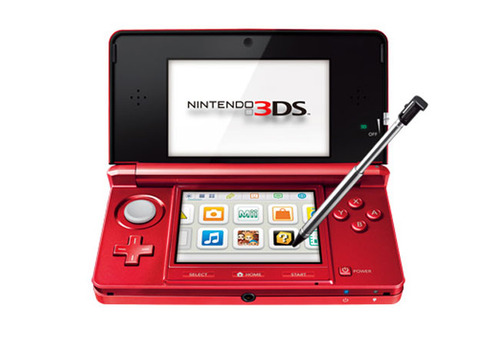
“Though nothing will ever match the simple pleasure of my first Game Boy, Nintendo’s made some great changes over time that manage to delight even the oldest kids among us.” — Zoë DiGiorgio
Growing up in the ’90s, I felt like it was almost a necessity to have a Game Boy. Long car rides, waiting rooms, my brother’s football games — everything became fun, or at least tolerable, when I had a Game Boy to escape into. I pursued Princess Daisy from the treetops, across lava pits and even underwater for hours. I ventured across Kanto with my faithful Pidgey and Pikachu. My Game Boy was my lifeline.
It’s hard to believe the Game Boy is 25 years old. The little pocketful of bliss had my back through thick and thin growing up. Though Nintendo is struggling nowadays to stay at the cutting edge of the gaming world, its 3DS has found its loyal fan base of gamers of those who grew up with the original Game Boy and younger generations who love the system’s fun, colorful games.
Things have certainly changed since Game Boys ruled the world. Here’s how:
One Screen vs. Two
Though it feels fairly standard for handheld systems now, the Nintendo DS (“Dual Screen”) was the first system to break from the single-screen format when it was released in 2004 — back in the day, just having one screen and a set of buttons was an exciting prospect.
The DS integrated the button-mashing gameplay of its ancestors with the novelty of touchscreen gameplay facilitated by a stylus.
When I was a kid, one of the most exciting Christmas gifts I received was a plug-in screen light for my Game Boy so I could play at night. Several years later, my Game Boy Advance SP was the coolest system ever because it had a built-in screen light that could be activated with the push of a button.
Now both screens on the Nintendo 3DS are lit, and users can control the brightness from the system settings. A lit screen is a set feature rather than just a plus.
We sure take these things for granted nowadays.
Black and White vs. 3-D
My first Game Boy was a hot pink Game Boy Color. So yeah, I was the coolest girl in the neighborhood. Just seeing things with a splash of color changed how we kids looked at our games. “This looks so realistic! My Squirtle is actually blue!”
My mom’s plain-old Game Boy was good for playing less interesting games such as Tetris, but when I could see Mario’s hat in red in the late ’90s, it was a huge revelation. I’ve never gone back.
Now handheld graphics have advanced by leaps and bounds. High-quality cutscenes appear more frequently in modern games. When the 3DS came out in 2011 during the big 3-D rush, many people were skeptical of the system’s ability to show 3-D without glasses. Even I was against the idea at first; I thought 3-D was a worthless game feature that was only good for giving players headaches. However, when I actually got my hands on a 3DS, I found being able to watch Link pop from the screen and leap out at me was absolutely worth the eye strain. It was just so pretty.
But even if you play the newest games on the less expensive Nintendo 2DS, the 3DS allows games to really take on a new dimension. Last year’s best-selling releases, Pokémon X and Pokémon Y, broke new ground for the franchise; though they retained many elements of the series’ top-down gameplay style, players could now move their characters diagonally.
My 7-year-old self would never have believed it.
Cables vs. Wi-Fi
Besides a Game Boy light, the next coolest gadget for getting the most out of your system was the link cable; plug that bad boy into your Game Boy and a friend’s, and suddenly you were playing together. No more being antisocial!
This cable was a must for gamers who wanted to play multiplayer games such as Mortal Kombat, Yoshi and Dr. Mario or for any hardcore Pokémon players who wanted to battle or trade with friends. Arranging these trades was a work of art for kids in my neighborhood, so more often than not, we’d just give up on playing before swapping our virtual pets.
Although, come to think of it, I never got that Growlithe my brother promised me.
Now I accidentally connect my 3DS tons of people on the campus every time I carry the system with me. When I pull my 3DS out of my book bag, I get a thrill out of seeing that little green light on my system indicating I StreetPassed with one of my peers and can now indulge in a StressPass mini-game.
The StreetPass system is just one of the many ways the 3DS has integrated connectivity into the system, and audiences have embraced these new features. Not only can players connect to nearby friends, but through Wi-Fi they can also connect to players around the world. The Wi-Fi shop allows players to try demos and download new games virtually.
Though nothing will ever match the simple pleasure of my first Game Boy, Nintendo’s made some great changes over time that manage to delight even the oldest kids among us.



